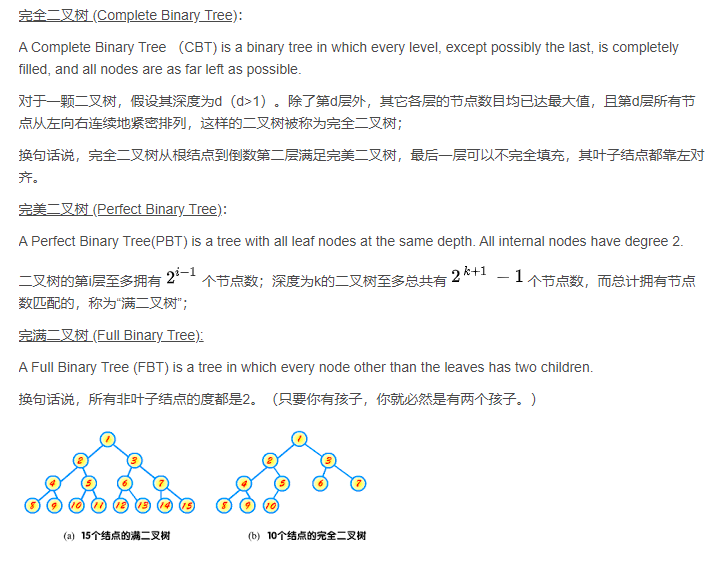Given a complete binary tree, count the number of nodes.
Note:
Definition of a complete binary tree from Wikipedia:
In a complete binary tree every level, except possibly the last, is completely filled, and all nodes in the last level are as far left as possible. It can have between 1 and 2h nodes inclusive at the last level h.
Example:
Input:
1
/
2 3
/ /
4 5 6
Output: 6

https://www.cnblogs.com/grandyang/p/4567827.html
https://www.cnblogs.com/yrbbest/p/4993469.html

Explanation
The height of a tree can be found by just going left. Let a single node tree have height 0. Find the height h of the whole tree. If the whole tree is empty, i.e., has height -1, there are 0 nodes.
Otherwise check whether the height of the right subtree is just one less than that of the whole tree, meaning left and right subtree have the same height.
- If yes, then the last node on the last tree row is in the right subtree and the left subtree is a full tree of height h-1. So we take the 2^h-1 nodes of the left subtree plus the 1 root node plus recursively the number of nodes in the right subtree.
- If no, then the last node on the last tree row is in the left subtree and the right subtree is a full tree of height h-2. So we take the 2^(h-1)-1 nodes of the right subtree plus the 1 root node plus recursively the number of nodes in the left subtree.
Since I halve the tree in every recursive step, I have O(log(n)) steps. Finding a height costs O(log(n)). So overall O(log(n)^2).
class Solution { int height(TreeNode root) { return root == null ? -1 : 1 + height(root.left); } public int countNodes(TreeNode root) { int h = height(root); System.out.println(h); return h < 0 ? 0 : height(root.right) == h-1 ? (1 << h) + countNodes(root.right) : (1 << h-1) + countNodes(root.left); } }
height-----根的height为0,height是最大子串长度-1
2. brute force(preorder traverse)
class Solution { List<Integer> list = new ArrayList(); public int countNodes(TreeNode root) { if(root == null) return list.size(); list.add(root.val); if(root.left != null) countNodes(root.left); if(root.right != null) countNodes(root.right); return list.size(); } }
3. 仔细想想完全二叉树,因为特殊性永远至少有一颗子树(或左或右)是满二叉树
利用这个性质,每次我们计算左右子树的高度,如果相当说明是满二叉树,n of nodes = 2 ^ h - 1
如果不相等,我们就返回1 + count(root.left) + count(root.right),1代表root,这样下去总会有结果
class Solution { public int countNodes(TreeNode root) { int lh = lefth(root); int rh = righth(root); if(lh == rh) return (1<<lh) - 1; else{ return 1 + countNodes(root.left) + countNodes(root.right); } } public int lefth(TreeNode root){ int h = 0; while(root != null){ root = root.left; h++; } return h; } public int righth(TreeNode root){ int h = 0; while(root != null){ root = root.right; h++; } return h; } }